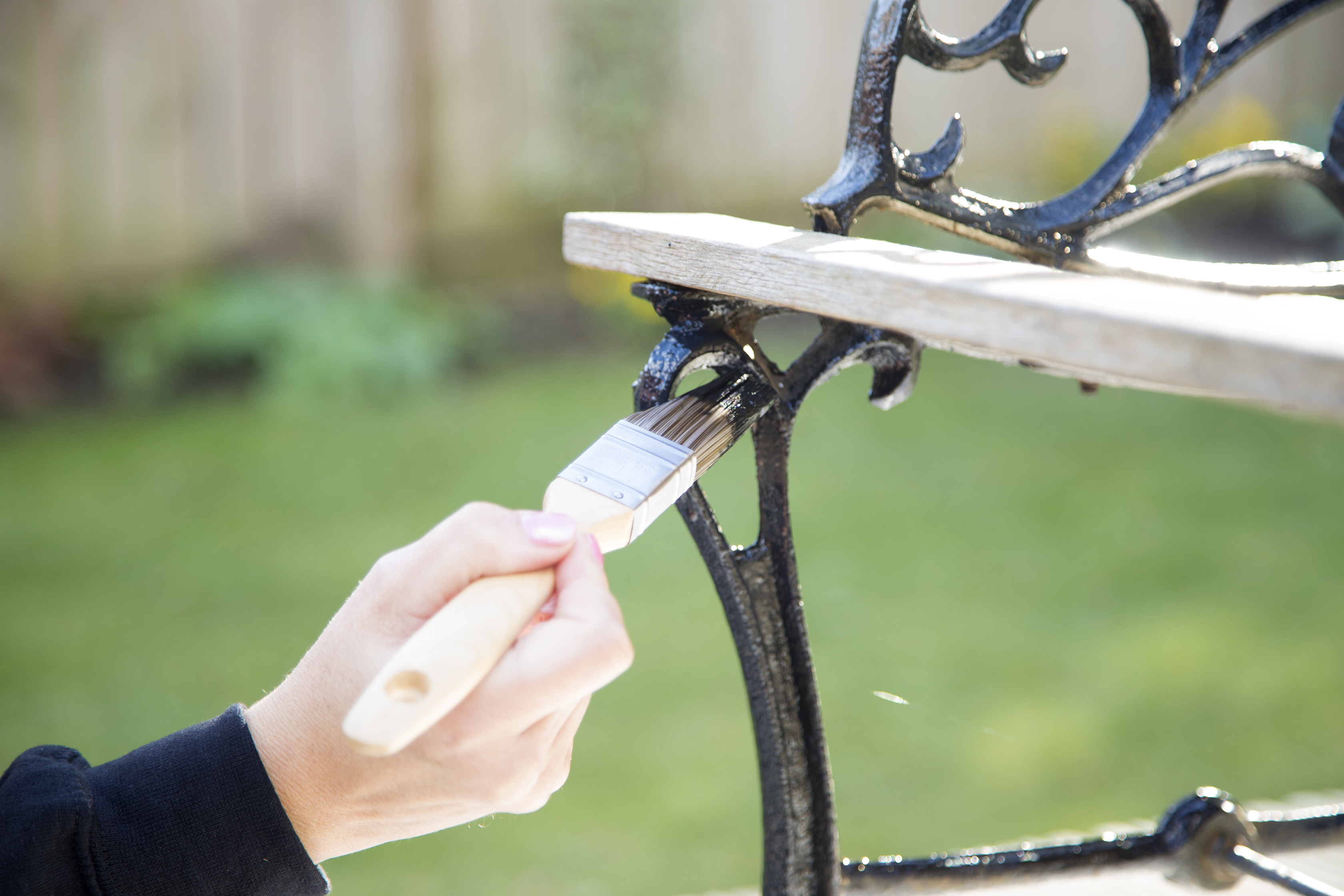Project overview
How to remove paint from metal
Removing paint from metal takes a little bit of elbow grease but is a simple job that leaves you with a smooth and bare surface ready for recoating.
Safe ways to remove paint from metal
Before you begin, it’s essential to take the proper steps to protect yourself. Some methods of removing paint can be a little dangerous, so it’s important to take precautions.
Always work in a well-ventilated area when stripping paint from metal — chemical paint strippers are flammable and angle grinders can spark and cause fires. So be sure to give yourself enough space and clear away flammable objects.
If you think the paint was applied before 1960, it may contain lead. Use a lead testing kit before you start to confirm or disprove this. If the paint does contain lead, you need to strip it so that it won’t cause dust, as the dust can be poisonous. The easiest way to do this is with a chemical paint stripper or call a professional to remove the paint.
Always wear a mask and safety goggles when you do any kind of sanding or stripping.
Tips for stripping paint from metal
If you’ll sand the metal, try not to use a sandpaper that’s too abrasive as it could scratch or groove the metal, ruining your final finish.
After you’ve stripped all the paint, wipe down the bare metal with white spirits and a clean rag. You now have a clean surface ready to recoat.
If you need to get into a tight or difficult area, a toothbrush is great for scrubbing corners.
Ways to remove paint from metal
Paint stripper
Paint stripper is the obvious go-to for removing any kind of paint. Be sure to pick one that’s suitable for use on metal.
Apply a thick layer of paint stripper with a brush and let it sit until the paint bubbles. The instructions on the stripper will tell you how long you need to wait for it to work, but this can be anything from 30 minutes to overnight.
If you have to leave the stripper for a long time or have several layers of paint to strip, wrap cling film around the metal to insulate the stripper and keep it in place.
After you’ve left the stripper to work its magic, use a scraper to peel off the paint. You might have to repeat this process if you’ve got a lot of paint or particularly tough spots to strip.
Paint stripper is well suited to large bits of metal, outdoor metal or items with paint in hard-to-reach places.
Natural methods
If you’d rather not use a chemical stripper, ever reliable vinegar or baking soda and heat can help to loosen paint.
Use an old pan and add water. For every litre of water, add about 60ml of vinegar or baking soda. Put the item you want to strip in the pan and boil for about 15 minutes or until the paint falls off.
Wear heat protective gloves and use tongs to remove the metal. Scrape off remaining paint.
This method is best suited to smaller pieces of metal that you can fit in a pan. It’s also not a foolproof way of removing paint - you might have better luck with a chemical stripper.
Angle grinder
An angle grinder with a paint stripping disc is a really effective way to strip metal that requires next to no effort on your part. It is really noisy and dusty though, so you need to be certain that the paint you’re stripping doesn’t contain lead.
Choose a stripping disc that’s specially designed for use on metal as it’s less likely to damage the material.
This is suitable for large flat expanses of metal like a garage door or fence.
Heat gun
Heat guns are brilliant at cutting through multiple layers of heat. You need to be extremely cautious when using a heat gun with metal as the heat can warp it, so always operate it on the lowest temperature, very slowly increasing if you need to.. This should still be effective as, when the metal warms, the paint will start to bubble or pull away from the metal. Then you need to scrape it off.
Always wear heat resistant gloves and safety goggles for this method, and don’t handle the metal until it’s cooled down.
Heat guns are great for really precise areas or if you only want to focus on a small section at a time.
A paint scraper
For paint that’s already loose and flaking, a paint scraper will make easy work of getting the rest of it off. Be careful not to scrape too aggressively and if you’re removing paint from a softer metal like brass, use a plastic blade scraper.
A scraper is well-suited to paint that’s already loose and small jobs.
Once you’ve stripped the metal and cleaned it, you’ll now have a surface ready for painting. Check out our latest guide for straightforward advice on how to paint metal, and visit your nearest stockist to pick up our Direct to Metal paint.
